|
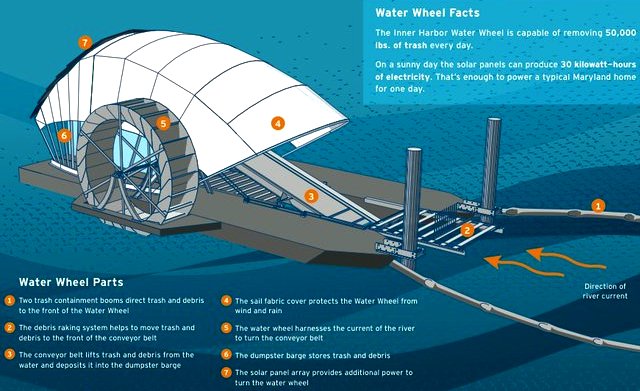
MR
TRASH 2014 - This is the solar and water-wheel powered barge in Baltimore
harbor. Two floating booms direct river debris to the front of the water
wheel. A raking system helps move trash onto a conveyor belt that dumps it
into a skip at the rear. A solar panel array keeps the wheel moving when the
river flow is reduced. All in all a nice bit of engineering.
JULY
2014 - TREEHUGGER: BALTIMORE RIVER WATER WHEEL - MR TRASH
Sometimes
old technologies prove to be the best. This is surely the case in Baltimore
where a giant water wheel is removing tons of trash every day from the water,
keeping it from ending up in the ocean. This centuries-old technology is
quickly becoming the best solution yet for keeping plastic out
of the oceans.
The
Inner Harbor Water Wheel sits at the mouth of the Jones Falls River where it
empties into the Inner Harbor. This river is fed into by the entire Jones
Falls Watershed which encompasses 58-square miles of land where tiny streams
all lead to the Jones Falls River, which empties into the harbor. Any trash
that ends up on the street or ground instead of in trash cans or recycling
bins ends up in storm drains, heading down that river and eventually making
its way to the Chesapeake Bay and the Atlantic
Ocean.
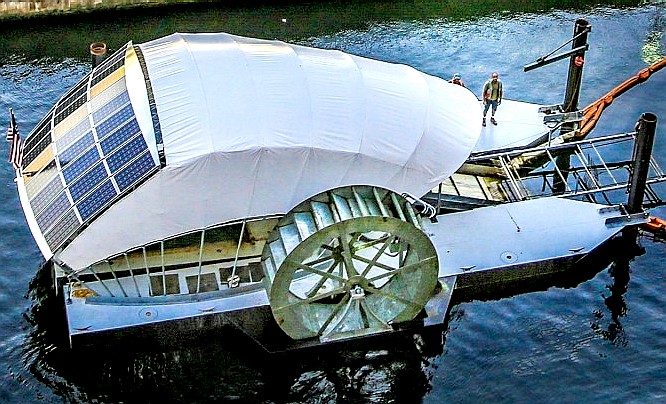
The
water wheel sits at the perfect place to collect all of this debris before it
can make it any farther and it's working really well. Every day since May 16
when it was installed, it has removed tons of debris from the water, with
about 63 tons collected as of July 7. It's capable of processing 25 tons a
day, though it hasn't ever processed more than about 5 tons in a day.
The
wheel works because the current of the river provides power to turn the water
wheel. The wheel lifts trash and debris from the water and deposits it in a
dumpster barge. When there isn't enough current to turn the wheel, a solar
panel array keeps
the wheel moving. When the dumpster is full, a boat comes to tow it away and
replace it with a new one.
The
great news is that any city with tightly-controlled tributaries can have the
same success with this technology. An entire watershed's trash and debris can
be prevented from reaching the ocean.
The
trash collected by the water wheel is taken to a waste-to-energy plant where
it is burned to produce electricity. The debris can't be recycled because
after rainstorms the runoff also includes sewage making the trash hazardous
material.
The
solar water wheel has become a bit of a celebrity. It has its own Twitter
account @MrTrashWheel and a YouTube video of the wheel in action has gotten
over a million views.
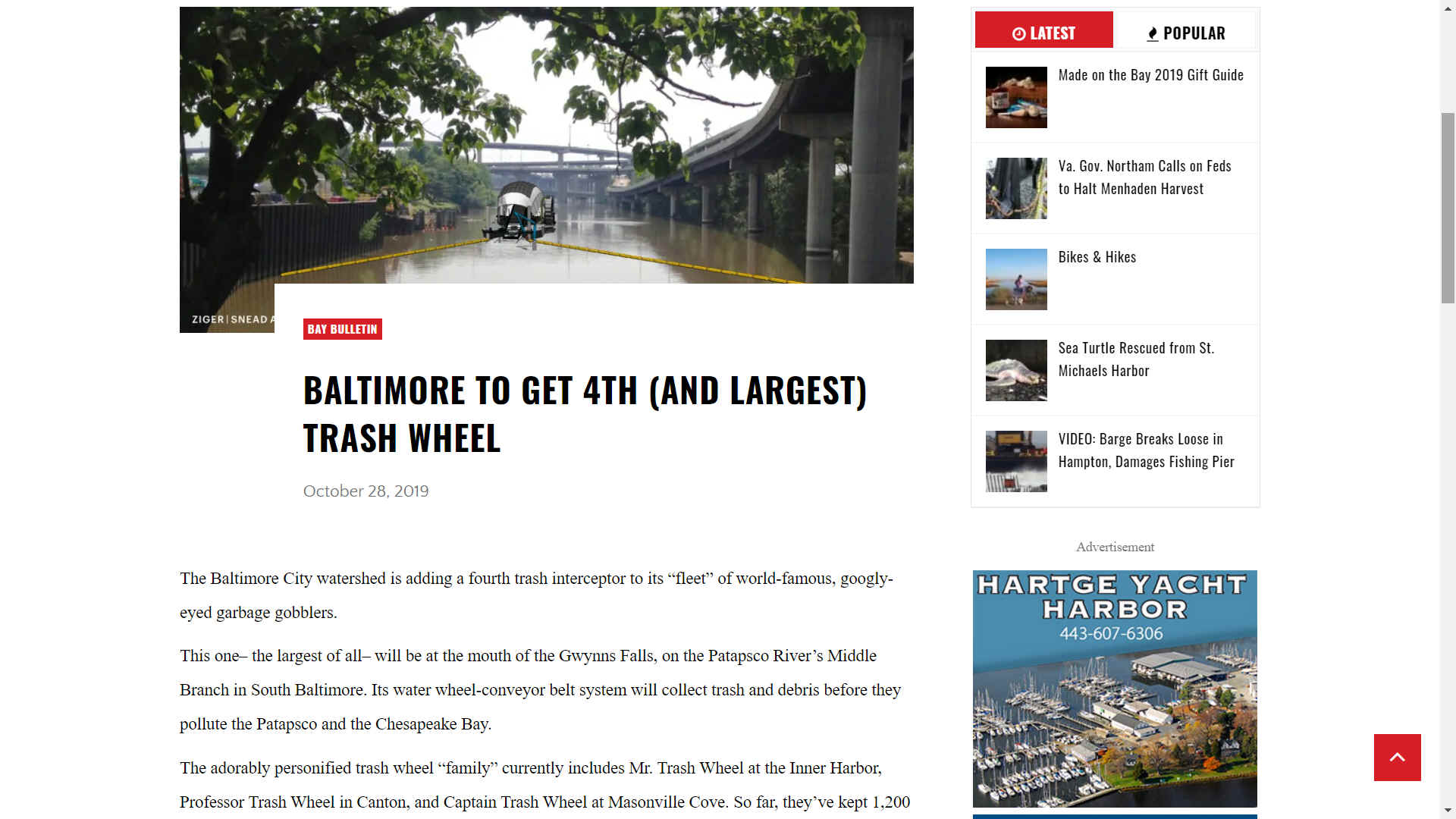
OCTOBER
28 2019 BALTIMORE TO GET 4TH (AND LARGEST) TRASH WHEEL
The Baltimore City watershed is adding a fourth trash interceptor to its “fleet” of world-famous, googly-eyed garbage gobblers.
This one– the largest of all– will be at the mouth of the Gwynns Falls, on the Patapsco River’s Middle Branch in South Baltimore. Its water wheel-conveyor belt system will collect trash and debris before they pollute the Patapsco and the Chesapeake Bay.
The adorably personified trash wheel “family” currently includes Mr. Trash Wheel at the Inner Harbor, Professor Trash Wheel in Canton, and Captain Trash Wheel at Masonville Cove. So far, they’ve kept 1,200 tons of trash and debris out of the river.
The newest trash wheel will need a name, of course, and the Waterfront Partnership’s Healthy Harbor Initiative is asking for suggestions. Submit yours here.
The trash wheel will be built and installed by Clearwater Mills, the Pasadena, Maryland-based company that invented the technology. It will have a grappling arm to help move large debris and a canopy covered by 72 solar panels. Solar and hydro power turn the water wheel, which powers a series of rakes and belt that will lift trash from the water and put it on a dumpster barge.
“We’ve had our googly eyes set on the Gwynns Falls for a long time,” said Adam Lindquist, director of the Healthy Harbor Initiative. “An estimated 400 tons of litter and debris flow into the Middle Branch each year. This new trash wheel will mean cleaner shorelines and less plastic in the Harbor and the Chesapeake Bay.”
Baltimore City and Baltimore County are both providing funding for operations.
“The trash wheels help give Baltimore communities the clean harbor they deserve,” Baltimore Mayor Bernard C. “Jack” Young said in a statement. “I applaud residents who do their part to keep their neighborhoods clean so that someday we won’t need trash wheels.”
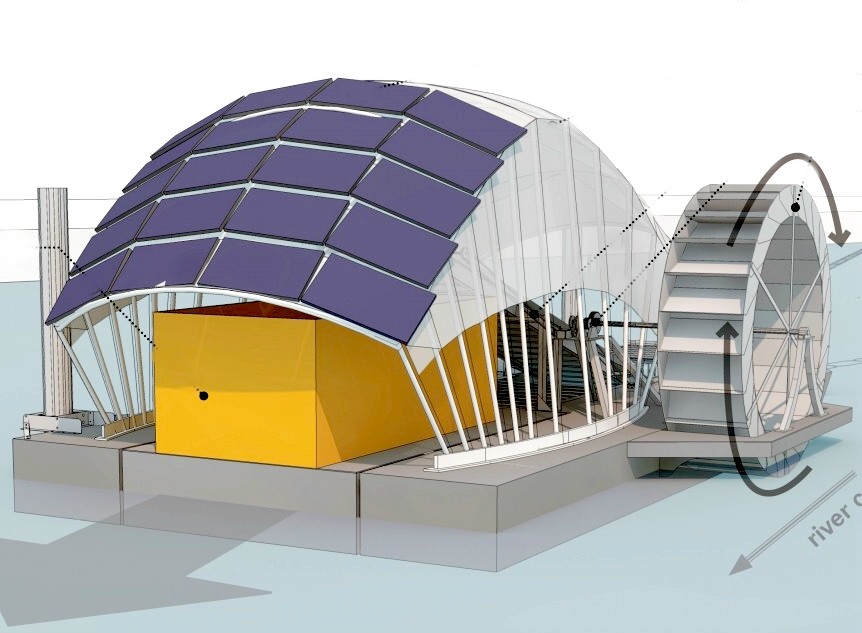
Weller Development, developer of the new waterfront Port Covington property, was an early project backer along with Continental Realty Corporation, and some funds from casino revenue are going to the trash wheel. The Maryland Port Adminstration (MPA) also committed $700,000 to construction and maintenance.
And where will all those dumpsters of collected trash go? The new interceptor’s neighbor, Wheelabrator Technologies, will offload trash from the river directly to its waste-to-energy facility for free, converting it into electricity for Maryland homes. Their in-kind support is valued at $320,000 per year.
The new trash wheel is one of five projects Clearwater Mills is working on; the other four are located in Brunswick, Georgia, Newport Beach, California, Milwaukee, Wisconsin, and Panama City, Panama.
By
Meg Walburn Viviano
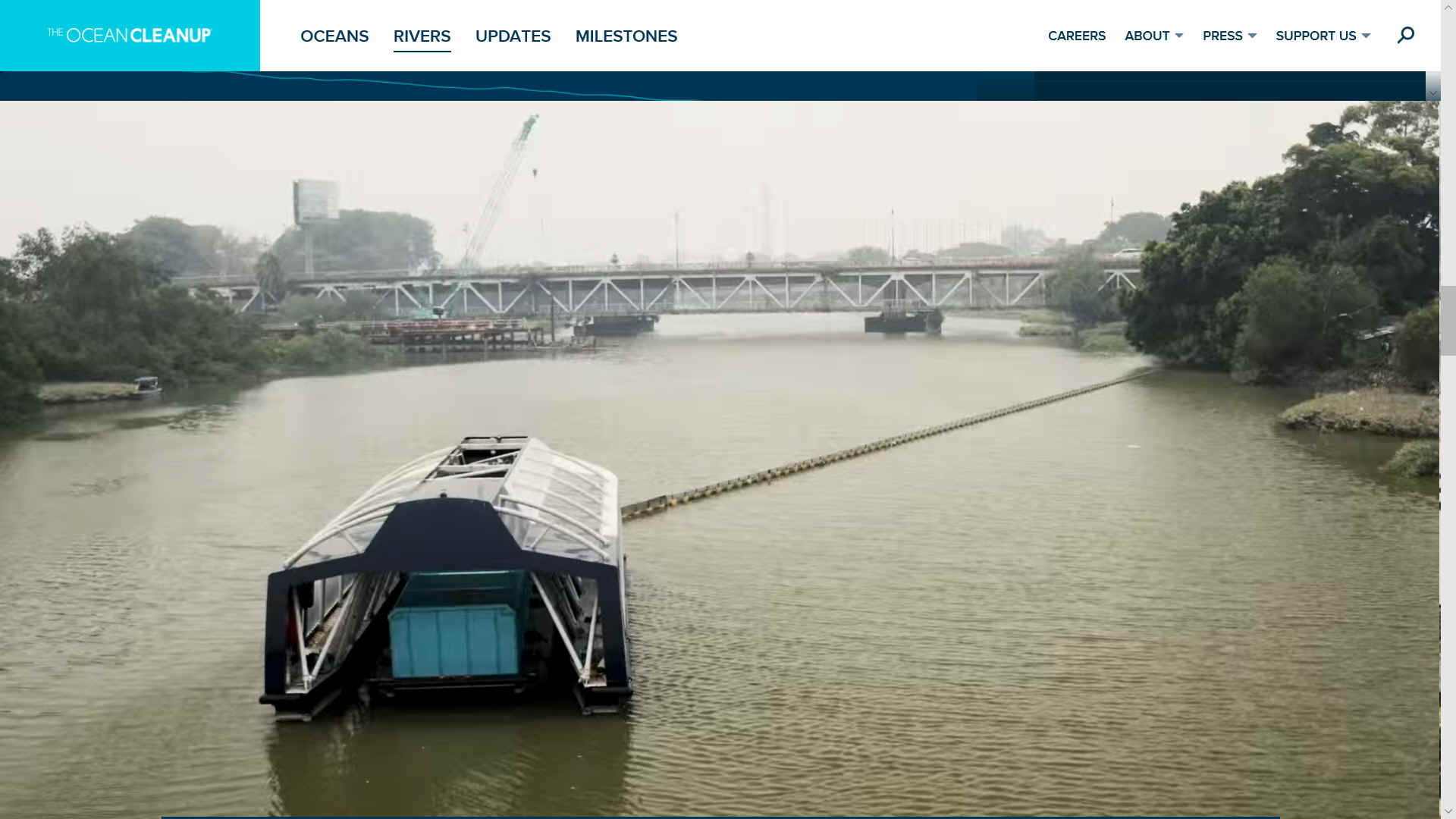
THE
SINCEREST FORM OF FLATTERY - On Oct. 26, 2019, Slat revealed his organization’s new innovation’ “The Interceptor,” at a launch event on a river in the Netherlands. The company built a stage on the water so that the audience could actually see how the Interceptor works.
The Interceptor is basically a static catamaran hull that has a long floating barrier to guide trash into its opening. This barrier doesn’t interfere with other vessels or marine life as it only takes up a part of the river. It’s anchored to the riverbed in a position that allows the natural current of the waterway to push debris towards the opening of The Interceptor, where it then piles onto a netted conveyor belt.
back into the river. The shuttle then pours the waste into six on-board dumpsters, which have a capacity to hold 50 cubic meters of trash. That means it’s capable of collecting between 50,000 kg and 100,000 kg of trash per day. Once the dumpsters are nearly at capacity, an automated text message is sent to local operators, who then collect the barge, empty the dumpsters to a waste management facility, and then return the barge back to the Interceptor.
Additionally, the system is entirely solar-powered, equipped with lithium-ion batteries, free of exhaust fumes, quiet, and it can run autonomously 24/7.
The Ocean Cleanup has already built four Interceptors, two of which are installed in Indonesia and Malaysia. The other two will be used in Vietnam and the Dominican Republic. Plus, there are two more that are currently being built, which will be installed in Thailand, and California.
Furthermore, the company aims to install an Interceptor in each of the 1,000 world’s most polluting rivers by 2025. This will make a massive difference in protecting our oceans and the sea creatures that inhabit it.
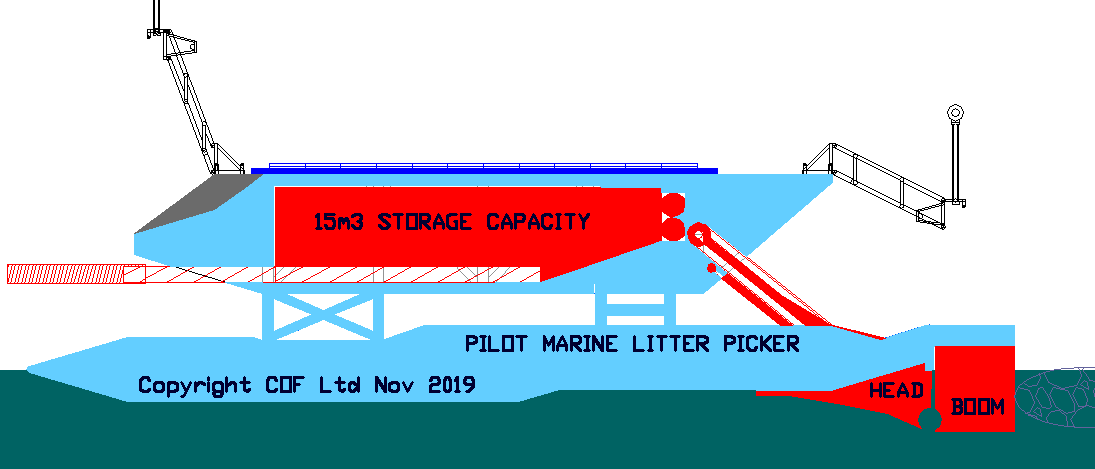
PILOT
MARINE LITTER PICKER -
This machine is essentially a 16 meter version of the 44 meter SeaVax. It is
the only design in the world capable of extracting micro plastics from rivers
at the time of writing. In this diagram we are looking through the
superstructure. We can see a boom ahead of the
cleaning head on the right, guiding litter into the filtration head, where
it is lifted up into the large storage chamber, then carried to a harbour
for offloading. The vessel is designed to navigate itself to a designated
location, with input from human operators as may be required, where a dockside
treatment or container storage system allows speedy turnarounds. Copyright © diagrams 21 November 2019. All rights reserved,
Cleaner Ocean Foundation Ltd.
Baltimore
Harbor is not alone in the fight against river litter. These
emerging technologies could all play a part in
containing the mountain of plastic that is accumulating on the oceans
floors, by recovering floating debris before it sinks. New ideas are
welcomed.
OCEAN
CLEANUP PROJECTS A - Z
*
Adidas
*
Algalita
research foundation *
Aliance
to end Plastic Waste AEPW
*
Baltimore
Mr Trash river cleaning barge
*
BAN - Basel
Convention Action Network
*
Boyan
Slat's ocean booms
*
CLAIM
H2020 EU marine plastic project
*
Earth Day - Fact
sheet ocean plastic
*
Fionn
Ferreira's ferrofluid extraction of microplastics
*
FlashLight
Press Michelle Lord & Julia Blatt
*
Greenpeace
*
GRIPS - Global
Research & Innovation in Plastics Sustainability
*
5 Gyres Institute
*
Interceptor
tethered river cleaning barges
*
Junk
Raft - plastic awareness voyage
*
Kids
Against Plastic Tat KAPTAT
*
Kulo
Luna graphic novel
*
Miss
Ocean - Plastic Awareness Events
*
4Ocean recycled plastic bracelets
*
Nike
- Sneakers from recycled materials, ocean spills
*
Ocean
Voyages Institute
*
Ocean Waste Plastic
*
Parley
AIR
*
Plastic Free
Eastbourne
*
Plastic
Oceans Canada
*
Plastic
Oceans Chile
*
Plastic
Oceans Mexico *
Plastic Oceans Org
*
Plastic Oceans UK
*
Recycling Technologies *
Rozalia Project
*
Seabin
*
Sea Litter
Critters
*
SeaVax autonomous drones
*
Surfers
Against Sewage
*
Surrey University PIRATE
& Triton
*
Sussex
Bay - Coastline marine rewilding project
*
World Oceans Day
*
WRAP - Waste
& Resources Action Programme
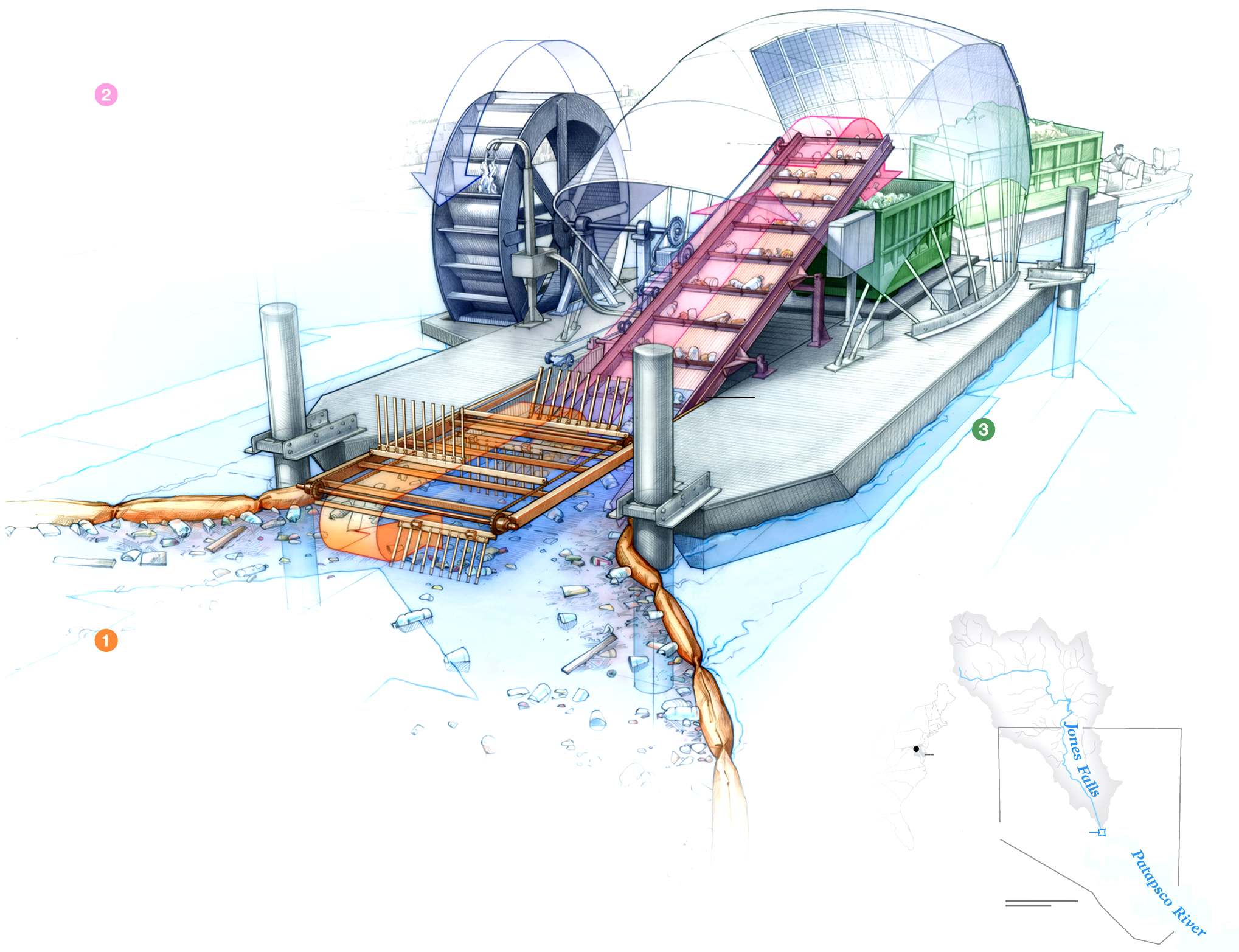
LINKS
& REFERENCE
https://chesapeakebaymagazine.com/baltimore-to-get-4th-and-largest-trash-wheel/
https://www.nationalgeographic.com/news/2017/02/mr-trash-wheels-professor-trash-wheels-baltimore-harbor-ocean-trash-pickup/ https://theoceancleanup.com/rivers/
https://www.intelligentliving.co/the-interceptor-the-ocean-cleanup-project-removing-plastic-from-rivers/
RIVER
BARGES - This
superb machine is the inspiration for others to follow. It may well have
been the model on which the Interceptor was based. If not, it surely
operates in much the same way, except for the missing waterwheel.
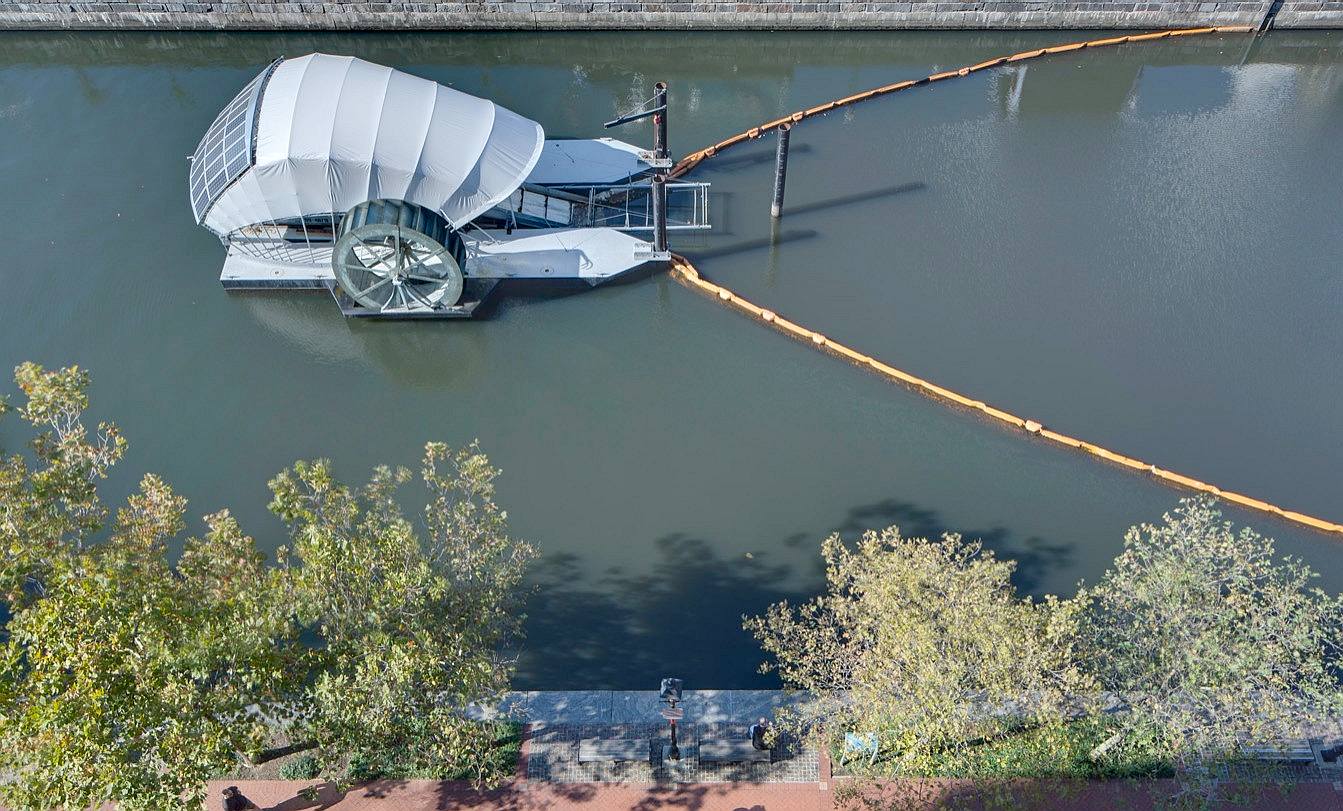
|







